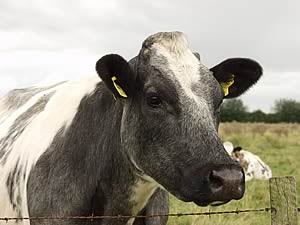 |
|||||||||
|
|||||||||||||||||||
| Causes
of massive wastage of cull cow resource must be tackled 24/07/06 The January 1st change in the EU hygiene regulations relating to emergency slaughter continues to be one of the causes of massive wastage in the number of cull cows entering the food chain on a cross-UK basis.
Another is the difficulty thousands of breeders, the majority of them dairy farmers, are still having in shaking off habits formed during ten years of the OTM Scheme (FSS) when culls were automatically jettisoned without any thought of their potential commercial value. So the National Beef Association which wants to see industry-wide measures taken to reduce this loss which is conservatively estimated at an astonishing £48 million, or 30,000-35,000 tonnes, of beef a year. "The beef sector cannot afford to see some 2,500 cows a week, that could be available for commercial slaughter, continue to slip through the system into the Fallen Stock Scheme (FSS)," explained NBA chairman, Duff Burrell. "Even allowing for a modest average value of 60p-65p per live kilo, or around £370 a head, this represents an income loss to the industry of £900,000 a week and wastage at that level is something it cannot afford to ignore." The Association wants more owners to be made aware of the potential these animals have to earn money and contribute to a serious reduction in regular herd replacement costs. It would also like to raise awareness of the benefits of investing say £100 in a treatment course to cure lameness - which is the most common reason for FSS entry. "But this problem needs to be examined from other directions too. It may be that some young vets are overcautious about sending cows that might be considered lame to the abattoir where they could be rejected," said Mr Burrell. "There needs to be agreement that if a cow can put her weight on all four feet when being loaded she should be considered fit to travel and that the MHS, and others in authority, should acknowledge, through an agreed protocol if necessary, that some lameness can appear as a result of a journey." "We would also like influential dairy consultants to help more dairy farmers to understand the commercial benefits of their re-connection with the beef industry after the repeal of the longstanding OTMS Rule." "And for an industry group, which should include animal health companies and vets, to be assembled so it can put over a co-ordinated message advising dairy farmers that too many cows directed into the FSS are being wasted. "In addition to this the NBA will be writing to veterinary organisations asking if they identify ways of helping to reduce this extremely high level of wastage." "It may also be that travel problems could be reduced by the introduction of more abattoir cover to shorten some journeys," Mr Burrell added.
|
|||||||||||||||||||

|
|
||||||||||||||||||
| home | agri-services | pedigree
pen | news | dairy | beef | machinery property | organisations | site map |
|||||||||||||||||||

